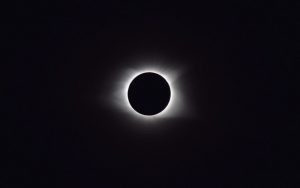The Google Pixel 2 and iPhone X are certainly receiving a whole lot of media attention. It’s two creative titans battling it out, attempting to win more customers. But, these two companies have quite a bit in common. At least, in one aspect. And, it applies to you as an entrepreneur.
What the Google Pixel 2 and iPhone X Actually have in Common
What you might think as rivals vying for bigger sales numbers is actually an important business lesson. It’s all about momentum. Keep momentum going and it serves up great rewards. After all, the Google Pixel and Pixel XL were hits. And, we all know the iPhone revolutionized the tech, communications, and entertainment worlds. So, it’s great to take away a valuable lesson from this latest product introduction round.
As the momentum starts and objectives are met watch for a change in pace; just like an out-of-shape runner, the tendency for many will be to stop part way up the hill to pat themselves on the back and look at how much distance they’ve covered. Don’t let them stop! You are pushing a rock uphill, as the momentum starts and everyone sees progress you need to double your efforts to keep it moving. —Inc.com
You probably know there are many components to running a successful business. That’s certainly no secret. But, specific actions can work wonders. For instance, giving up bad habits and other hangups are prime examples. Another strategy is to get in front of people personally. However, you need momentum to stay on track.
How to Keep Momentum Going
That’s what the announcement and release of the Google Pixel 2 teaches us. It’s a follow-up, designed to entice consumers. And, it’s generated a whole lot of media buzz. Now, every single thing about it will certainly be poured over by tech lovers. You can apply this lesson to your business. Keep momentum going and reap the rewards by doing the following:
- Set new goals and objectives. As you hit milestones, dedicate yourself to setting new goals and objectives. Planning ahead means moving forward and that’s a great way to keep momentum working for you.
- Automate where it is possible. Use automation to your advantage to maximize productivity. Don’t get bogged down where and when it isn’t necessary. You can set content marketing and social media marketing on a schedule, as two examples.
- Always keep inspiration nearby. Research from Harvard and MIT reveals books are a great source of inspiration. Engaging your brain in something you love breathes inspiration. And, it also increases your knowledge, so it’s two-for-one.
- Schedule time off and actually use it. Another way to keep momentum going is to take time off. That sounds strange at first but makes a lot of sense when you consider the benefits of rest and relaxation.
What ways do you keep momentum going? How do you stay motivated? What methods work best for pushing forward you’ve done? Please share your thoughts and experiences by leaving a comment!
Interested in learning more about business? Then just visit Waters Business Consulting Group.
[shareaholic app=”follow_buttons” id=”26833294″]




